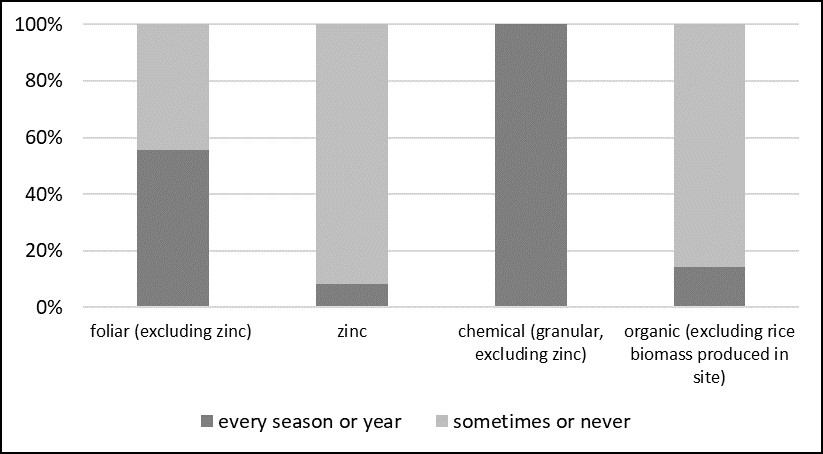VOLUME 13 NUMBER 1 (January to June 2020)

Philipp. Sci. Lett. 2020 13 (1) 61-69
available online: May 31, 2020
*Corresponding author
Email Address: jcmagahud@gmail.com
Date received: February 16, 2019
Date revised: February 28, 2020
Date accepted: May 29, 2020
ARTICLE
Extent and determining factors of fertilizer applications and rice straw management in major irrigated rice areas of the Philippines
by Jehru C. Magahud*1, Sheena Lourdes P. Dalumpines1, Pearl B. Sanchez2, and Wilfredo B. Collado3
1Research Division, Philippine Rice Research Institute,
Agusan del Norte
2Agricultural Systems Institute, University of the Philippines
Los Baňos, Laguna
3Agronomy, Soils, and Plant Physiology Division;
Philippine Rice Research Institute, Nueva Ecija
Agusan del Norte
2Agricultural Systems Institute, University of the Philippines
Los Baňos, Laguna
3Agronomy, Soils, and Plant Physiology Division;
Philippine Rice Research Institute, Nueva Ecija
Trends in fertilizer applications and rice straw management should be documented to help craft appropriate recommendations that increase productivity and minimize air pollution in major rice areas. This study was done to assess the extent of fertilizer applications (FA), and the nature of rice straw management (RSM) in major irrigated lowland rice areas of the Philippines. It compared FA and RSM in Pangasinan, Nueva Ecija and Laguna. It also determined factors that affect such applications relative to expected rice yields and irrigation water sources. A questionnaire was used to survey farmers’ FA and RSM in 79 rice farms during wet and dry cropping seasons. Results showed that all farmers interviewed applied chemical and nitrogen (N) fertilizers, and most of them applied phosphorus (P) and potassium (K) every season. Chemical fertilizers were applied two or three times every season, mostly urea (46-0-0) and complete (14-14-14) fertilizers, averaging 7 bags in a season. Mean seasonal nitrogen-phosphate-potash (N-P2O5-K2O) rate was 114-24-21 kg/ha. Most Nueva Ecija farmers applied ammonium phosphate (16-20-0). Wet season N rates in Pangasinan were higher at 132 kg/ha, with most of them applying foliar fertilizers. Laguna farmers did not burn rice straw in the wet season. More chemical fertilizers were applied in high-yield farms irrigated by national and communal irrigation systems than in low-yield farms irrigated by rivers and deep wells. Most farmers did not apply zinc and organic fertilizers, but they openly burned rice straw. The study suggests that application of chemical and N fertilizers is a general practice among farmers in the country’s irrigated lowland rice areas. The study also confirms that N is applied in highest quantities, and that open burning of rice straw is a common malpractice among Filipino rice farmers. Diagnostic tools should be used to monitor soil N and K levels, and optimize efficiency of N fertilizers. The losses and crop assimilation of applied N should be studied in Pangasinan farms to improve N use, and cut fertilizer expenses. Incorporation of rice straw is also recommended to increase soil nutrient levels and prevent health problems from open burning.
© 2025 SciEnggJ
Philippine-American Academy of Science and Engineering